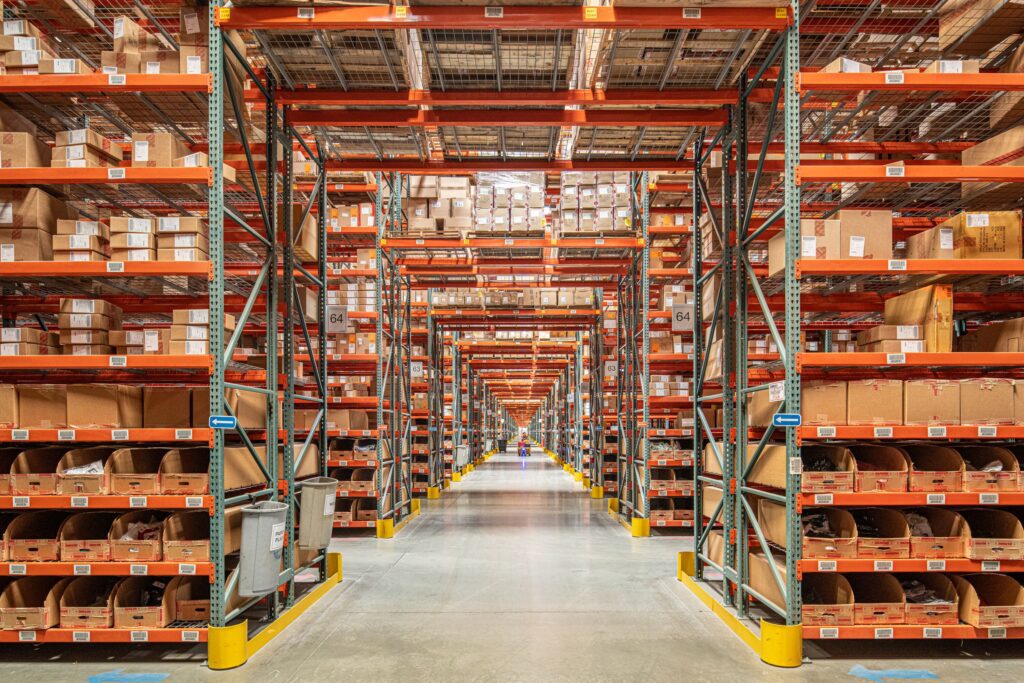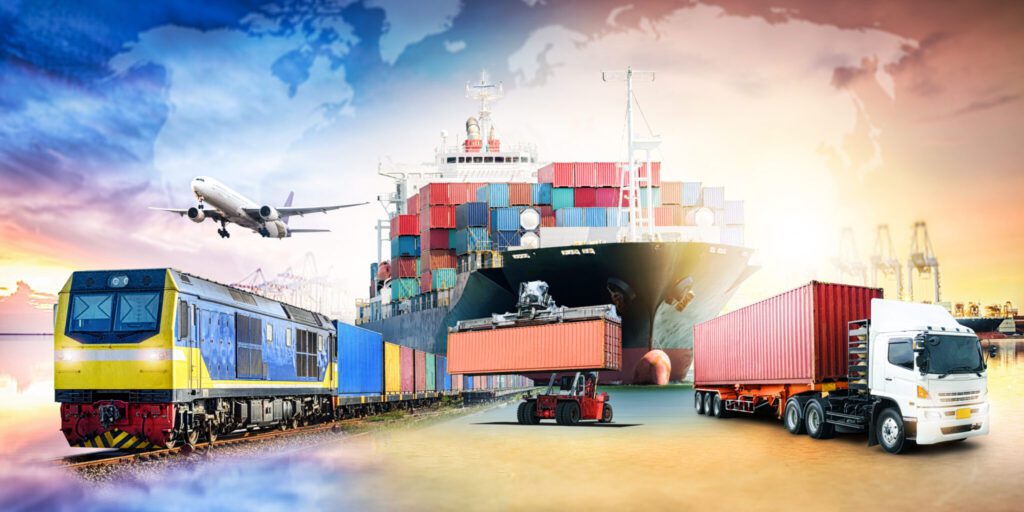WHAT IS LOGISTICS AND SUPPLY CHAIN MANAGEMENT

What are the Connection between logistics and supply chain management?
Logistics and supply chain management are closely related concepts that work together to ensure the efficient flow of goods and services from the point of origin to the point of consumption. While they are related, they encompass slightly different aspects:
Logistics: Logistics focuses primarily on the movement, storage, and transportation of goods and services. It involves activities such as procurement, transportation, warehousing, inventory management, packaging, and distribution. The goal of logistics is to ensure that the right products are available at the right place, at the right time, and in the right condition, while minimizing costs and maximizing efficiency.
Supply Chain Management (SCM): Supply chain management is a broader concept that encompasses logistics but also involves the strategic coordination and integration of all activities involved in the sourcing, procurement, conversion, and logistics management. SCM involves managing the flow of goods, information, and finances across the entire supply chain, from raw material suppliers to end customers. It focuses not only on the internal operations of a single company but also on the relationships and interactions with suppliers, partners, and customers to create value and achieve competitive advantage.
In summary, logistics is a subset of supply chain management, focusing specifically on the physical movement and storage of goods, while supply chain management encompasses logistics as well as broader strategic and operational activities involved in managing the entire supply chain ecosystem.
Supply chain management is a way link major business processes within and across companies into a high performance business model that drives competitive advantage. Logistics refers to the movement, storage, and flow of goods, services and information inside and outside the organization. Logistics is an activity within the supply chain.
The complete process of organising the procurement, storage, and movement of resources to their eventual destination is referred to as logistics and supply chain management. Because it encompasses all components of the manufacturing process, logistics is an essential component of the manufacturing process.
involves collaboration between firms to connect suppliers, customers and other partners as a means of boosting efficiency and producing value for the end consumer.
Your items will not arrive on schedule or in outstanding condition unless logistics are in place. Many small firms outsource their logistics to third-party services. Small companies profit from this because it allows them to concentrate on their core skills while outsourcing transportation and shipment to a professional third-party provider. Due to a lack of personnel and expertise, a small firm with limited resources may be unable to finish the final product stage. Logistical challenges, for example, might involve determining which supplier to utilize for your components.
How does a Logistics System Operate?
The logistics system is made up of three major parts
- Manufacturing Logistics Systems
- Distribution Logistics Systems
- Transportation Logistics Systems
Manufacturing Logistics Systems
Manufacturing logistics encompasses all areas of manufacturing operations planning, organization, and support. Manufacturing logistics may be viewed as a ring of ever-changing industrial problems driven by technical advancements and the global economy, as well as an academic research topic embracing many areas of operations management and supply chain logistics innovations.
Important corporate environment issues must be addressed in significant contributions to industrial logistics. Manufacturing logistics’ core business environment is a factor that is always evolving throughout time
Distribution Logistics Systems
Sales logistics is another word for distribution logistics. The link between manufacturing and transportation is known as distribution logistics. The field encompasses all operations involved in product distribution, from manufacture through transportation. Distributors and processing plants are among the customers.
Distribution logistics include commodity handling, transportation, and temporary storage. As a result, the sector has grown to be a key component of added logistics, and it is strongly tied to packaging technology.
Main objectives of Distribution Logistics and supply chain management
- Minimize Manufacturing Costs.
- Efficient Flow of Operations.
- Better Communication Flow.
Transportation Logistics and supply chain management Systems
Transportation refers to the actual moving of objects. Logistics users, raw material suppliers, manufacturers, warehouses, and channel partners are all linked by the transportation system. Road, boat, rail, and air are the four primary forms of transportation. Water travels the slowest, whereas air travels the fastest. Roadways deliver commodities within communities, whereas railways move products over great distances.
Airline and waterway transportation is largely used to carry commodities between nations. Transportation logistics must find a balance between the necessity for speed and the expense of the form of transportation. The service charge, minimum weight restrictions, offloading facilities, and packing standards are all included.
Types of logistics
Inbound Logistics and supply chain management
Inbound logistics, which focuses on the purchase and coordination of materials, components, and unfinished inventory from suppliers to production or assembly plants, warehouses, and retail outlets, is one of the most significant areas of logistics.
The production unit of a manufacturing business acquires raw materials or components from its suppliers in order to make other commodities. The process of moving bought things into an organization is known as inbound logistics. Inbound logistics is the procedure that occurs before a product is transported.
Outbound Logistics and supply chain management
The process of storing and delivering finished items as well as information from the supply chain to the end customer is referred to as outbound logistics. Outbound logistics is concerned with the demand side of the supply-demand equation.
The operation involves the storage and delivery of products to the eventual user or client. Order fulfillment, packing, shipping, delivery, and delivery-related customer support are among the procedures. As a result, outbound logistics may be defined as operations that take place after the product is ready to ship.
Components of the Logistics
- Warehouse
- Packaging
- Inventory
- Transportation
- Information and Control
Warehouse

A wide range of enterprises utilizes warehouses to keep things in bulk before transporting them to other sites or to end-users individually. Warehouses are industrial constructions that are commonly seen in industrial zones or locations. Storage warehouses, distribution hubs, retail warehouses, and cold storage warehouses are all examples of warehouses.
Packaging

Packing is the process of carefully and neatly wrapping objects. Packing seeks to condense items as close to a cuboid form as feasible since a box is the easiest product to handle and store. Packaging logistics is a sub-discipline of logistics that integrates manufacture and delivery. Packaging logistics include not only packaging goods but also packaging techniques and structures
Inventory

All of a company’s assets, goods, merchandise, and supplies that it keeps on hand in order to compete for a profit in the marketplace are referred to as inventory. The importance of inventory in logistics arises from its capacity to match end-user demand with supplier supply. It is the inventory that can meet the needs of the client. The ‘human aspect’ is the most important distinction between the two systems. While inventory management is only concerned with merchandise or stock, warehouse management also encompasses employee supervision and warehouse professional transportation.
Transportation

Transportation, as previously stated, is the movement of objects from one area to another in a variety of vehicles. Logistic transportation, also known simply as transportation logistics, refers to the planning, management, and execution of the physical movement of goods and materials from one location to another within the supply chain.
It is a crucial component of logistics and supply chain management, as it involves the efficient coordination of various transportation modes and routes to ensure timely delivery of products while minimizing costs.
Key aspects of logistic transportation include:
-
Mode Selection: Choosing the appropriate transportation mode based on factors such as distance, urgency, cost, and nature of the goods. Common transportation modes include road (trucking), rail, air, sea, and intermodal (combination of multiple modes).
-
Routing and Scheduling: Determining the most efficient routes and schedules for transporting goods to optimize delivery times and minimize transportation costs. This involves considering factors such as traffic conditions, weather, fuel efficiency, and capacity constraints.
-
Carrier Selection: Selecting carriers or transportation service providers based on their reliability, cost-effectiveness, capacity, and service levels. This may involve negotiating contracts and managing relationships with carriers to ensure smooth operations.
-
Documentation and Compliance: Handling the necessary documentation and regulatory compliance requirements associated with transportation, such as customs clearance, permits, licenses, and transportation contracts.
-
Tracking and Visibility: Implementing systems and technologies to track the movement of goods in real-time and provide visibility into shipment status for all stakeholders involved in the supply chain, including suppliers, manufacturers, logistics providers, and customers.
-
Risk Management: Identifying and mitigating risks associated with transportation, such as delays, damages, theft, and disruptions, through proactive planning, contingency measures, and insurance coverage.
Overall, effective logistic transportation plays a critical role in ensuring the smooth flow of goods through the supply chain, contributing to customer satisfaction, cost reduction, and competitive advantage for businesses.
Information and Control

The purpose of information logistics is to deliver the proper product, which contains the relevant data element, in the correct format, to the correct individual at the right price, based on customer demand. Order levels influence which orders must be chosen and packaged in warehouses, as well as transportation planning and management. Information and control’s role is to assist in the development of information systems that may be utilised to control operational activities. They’re also important for anticipating demand and inventories.